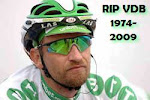 WSJ Online
WSJ OnlineFEBRUARY 6, 2009, 8:04 P.M. ET
By STEPHEN MILLER
One of the nice things about owning a battalion's worth of tanks is that when you throw a party, you can show off your war machines by crushing a car or two for your guests.
Jacques Littlefield, who boasted one of the world's most extensive private collections of rolling armor, enjoyed that perk. He had a trained engineer's love of mechanical innovation and the leisure to do painstaking restoration, bringing the rumble of martial steel to the verdant hills of Portola Valley, Calif.
Along with a small staff of mechanics at his ranch, Mr. Littlefield restored more than 200 pieces of military equipment, from self-propelled Soviet artillery to a British Rapier missile launcher to 65 tanks. The machines were displayed in a football-field-size garage at his private museum, which welcomed about 5,000 visitors annually.
The pride of his collection was a German Panzer V Panther from World War II, recovered from a Polish river, that his mechanics toiled for five years to restore. One of only a handful of working Panzer V's in existence, it received its finishing touches just weeks after Mr. Littlefield's death at 59 from cancer Jan. 7.
"His was one of the places on your bucket list," notes Reg Hodgson, editor of Army Motors, the journal of the Military Vehicle Preservation Association. While the association boasts 9,200 members world-wide, only a handful have the resources to collect significant quantities of vehicles.
Mr. Littlefield was born into wealth. His great-grandfather having founded the Utah Construction Co., which helped build the Hoover and Grand Coulee dams. His father oversaw a 1976 merger with General Electric Co. that made him a member of the Forbes 400 Richest People in America.
Mr. Littlefield grew up making models and loving technology. "My idea of a fun vacation was to look at factories -- a refrigerator factory in Louisville, a Cessna plant in Wichita," he told the San Francisco Chronicle in 2007. At his ranch was a mile-long track of model railway maintained by local hobbyists, as well as a baroque-style pipe organ he commissioned based on European originals in an acoustically high-tech hall.
Like his father, Mr. Littlefield studied engineering and business at Stanford University. Instead of joining fellow students in war protests, he spent his spare time in the engineering shop and once built a ¼-scale M-60A1 Patton tank with a working flamethrower.
 "His politics were a bit different," chuckles William A. Boller, an old friend and colleague who now is president of Mr. Littlefield's Military Vehicle Technology Foundation, which oversees his legacy.
"His politics were a bit different," chuckles William A. Boller, an old friend and colleague who now is president of Mr. Littlefield's Military Vehicle Technology Foundation, which oversees his legacy.In 1975, Mr. Littlefield acquired his first military vehicle, an American M3A1 scout car, rather like an armored Jeep. Slowly acquiring more, he discovered a love of collecting. "There is a genre of human being like me," he told the New York Times in 2003. "It's like a type of dog."
The end of the Cold War brought a lot of Soviet-bloc armaments onto the market. Mr. Littlefield worked with fellow collectors and agents to import all sorts of hardware, but usually vehicles that represented some sort of technical or functional advance.
He also amassed spare parts, which cropped up from odd places and which he shared with fellow collectors. When he didn't have a spare, his mechanics could usually improvise something, often based on original blueprints that Mr. Littlefield housed in a large library.
The point was to be true to the original specifications, down to the nuts and bolts. Even the textile-coated wiring of an earlier day was replicated. The Panzer V's engine was rebuilt with the original engine block and transmission, even though, Mr. Littlefield said in a documentary for the History Channel, it was too light for the 49-ton behemoth and the gears were vulnerable to stripping.
Mr. Littlefield's workshop helps illuminate differences in war strategy. The Germans favored big, complicated tanks in part because they could always transport them to a factory for repairs. The Americans, fighting on battlefields an ocean away from home, built smaller, easier-to-repair tanks from standardized parts. In 2001, Mr. Littlefield told Forbes it took four Sherman tanks to destroy a Panzer, and three might end up destroyed themselves.
Dave Marian, the foundation's curator, explains that "Germans solve problems in Germanic ways. A Panzer tank had probably eight times more parts than a [U.S.] Sherman tank."
Mr. Littlefield didn't lend his vehicles to Hollywood studios, though he did let Steven Spielberg record tank sounds for the film "Saving Private Ryan." He also had a few high-profile items, such as the halftrack personnel carrier Lee Marvin drove in the movie "The Dirty Dozen" and one of the screws from the oceanliner Lusitania.
His collections extracted a personal cost. "It happens to a lot of guys," he told The Wall Street Journal in 1992. "It happened to me. You get a tank, you get divorced. You get divorced, you lose the tank to pay the settlement."
Video: Panther w/ turret first drive!!!!
Photo Collection from Littlefield's museum.







No comments:
Post a Comment
Pappillon welcomes your comments and encourages your participation. Comments may, however, be moderated.